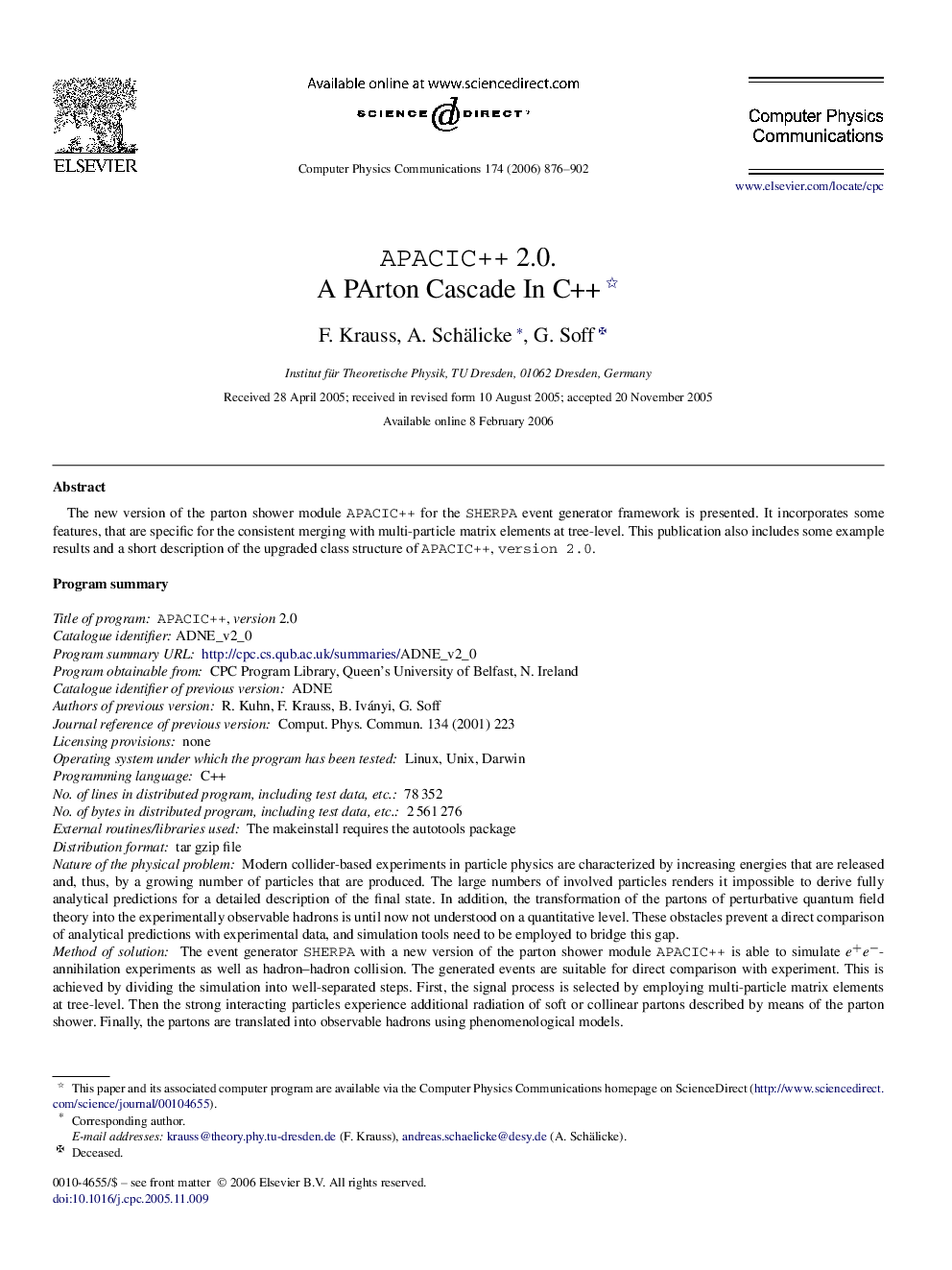| کد مقاله | کد نشریه | سال انتشار | مقاله انگلیسی | نسخه تمام متن |
|---|---|---|---|---|
| 503621 | 863788 | 2006 | 27 صفحه PDF | دانلود رایگان |

The new version of the parton shower module APACIC++ for the SHERPA event generator framework is presented. It incorporates some features, that are specific for the consistent merging with multi-particle matrix elements at tree-level. This publication also includes some example results and a short description of the upgraded class structure of APACIC++, version 2.0.Program summaryTitle of program:APACIC++, version 2.0Catalogue identifier:ADNE_v2_0Program summary URL:http://cpc.cs.qub.ac.uk/summaries/ADNE_v2_0Program obtainable from: CPC Program Library, Queen's University of Belfast, N. IrelandCatalogue identifier of previous version: ADNEAuthors of previous version: R. Kuhn, F. Krauss, B. Iványi, G. SoffJournal reference of previous version: Comput. Phys. Commun. 134 (2001) 223Licensing provisions: noneOperating system under which the program has been tested: Linux, Unix, DarwinProgramming language: C++No. of lines in distributed program, including test data, etc.: 78 352No. of bytes in distributed program, including test data, etc.: 2 561 276External routines/libraries used: The makeinstall requires the autotools packageDistribution format: tar gzip fileNature of the physical problem: Modern collider-based experiments in particle physics are characterized by increasing energies that are released and, thus, by a growing number of particles that are produced. The large numbers of involved particles renders it impossible to derive fully analytical predictions for a detailed description of the final state. In addition, the transformation of the partons of perturbative quantum field theory into the experimentally observable hadrons is until now not understood on a quantitative level. These obstacles prevent a direct comparison of analytical predictions with experimental data, and simulation tools need to be employed to bridge this gap.Method of solution: The event generator SHERPA with a new version of the parton shower module APACIC++ is able to simulate e+e−e+e−-annihilation experiments as well as hadron–hadron collision. The generated events are suitable for direct comparison with experiment. This is achieved by dividing the simulation into well-separated steps. First, the signal process is selected by employing multi-particle matrix elements at tree-level. Then the strong interacting particles experience additional radiation of soft or collinear partons described by means of the parton shower. Finally, the partons are translated into observable hadrons using phenomenological models. The module APACIC++ concentrates on the parton shower evolution of jets, both in the initial and in the final state of the signal process. Suitable interfaces to other modules of the event generator SHERPA are provided.Reasons for the new version: This new version is able to perform not only final state shower but also initial state shower evolutions. Thus the program gives now also a realistic description of proton–proton and proton–anti-proton collisions. It is particularly designed to simulate events at the Tevatron or the LHC.Summary of revisions: The package has been extended by a number of classes for the description of the initial state shower. In order to give optimal support for these new routines, all existing classes of the final state shower have been revised, but the basic structure and concept of the program has been maintained. In addition a new dicing strategy has been introduced in the time-like evolution routine, which substantially improved the performance of the final state shower.Additional comments: The package APACIC++ is used as the parton shower module of the general purpose event generator SHERPA. There it takes full advantage of its capabilities to merge multi-jet matrix element and parton shower evolution.Running time: The example programs take a matter of seconds to run.
Journal: Computer Physics Communications - Volume 174, Issue 11, 1 June 2006, Pages 876–902